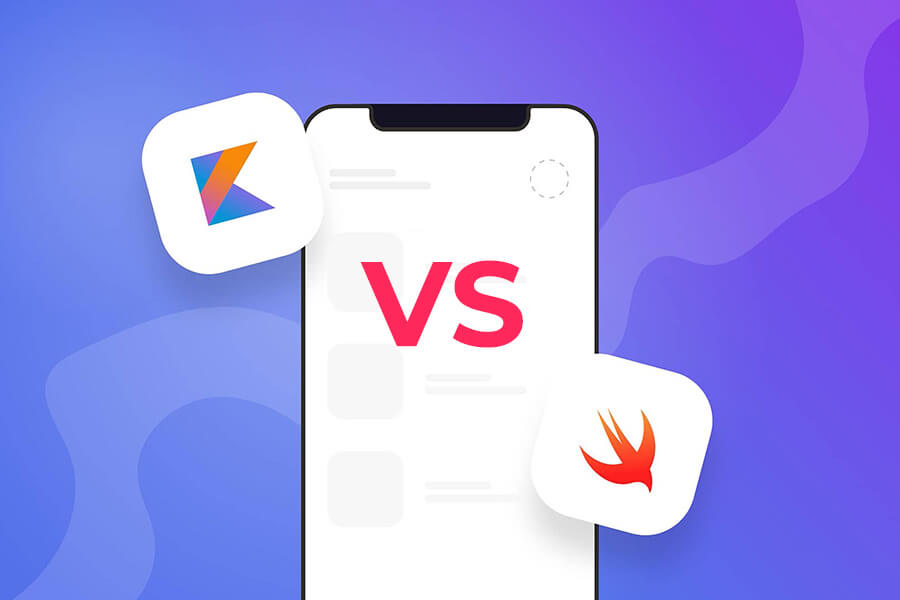A Developer’s Guide to Making the Right Decision
Mobile app development requires choosing the correct programming language from the start, and two languages dominate the native development landscape. Swift powers iOS applications exclusively, while Kotlin serves as Google’s preferred language for Android development. Both languages offer modern syntax, strong performance, and robust tooling, making them attractive options for developers.
The choice between Swift and Kotlin ultimately depends on target platform requirements, team expertise, and long-term project goals rather than the technical superiority of either language. Swift remains the only viable option for native iOS development, while Kotlin has become the standard for Android applications. However, the decision becomes more complex when considering factors such as cross-platform compatibility and the skills of the development team.
Understanding the strengths and limitations of each language helps development teams make informed decisions that align with their project requirements. Swift vs. Kotlin in 2025 presents unique considerations as both languages continue to evolve with new features and capabilities. The evaluation process involves examining performance characteristics, development ecosystems, and how each language fits into broader mobile development strategies.
Key Considerations When Choosing Between Swift and Kotlin
The choice between Swift and Kotlin depends on target platforms, performance requirements, and developer productivity factors. Each language excels in specific areas that directly impact development timelines and app quality.
Platform Support and Compatibility
Swift serves as Apple’s primary language for iOS and macOS development within Xcode. Developers use Swift exclusively for native iOS applications and can leverage the same codebase for macOS apps.
Kotlin serves as Google’s preferred language for Android development, supported by Android Studio. JetBrains designed Kotlin to be fully interoperable with Java, allowing gradual migration from existing Java codebases.
Platform Scope:
- Swift: iOS, macOS, watchOS, tvOS
- Kotlin: Android, JVM platforms, server-side development
Swift integrates seamlessly with Apple’s ecosystem and frameworks, such as SwiftUI. Kotlin offers broader platform compatibility, extending beyond mobile to include web backends and desktop applications.
The platform compatibility differences significantly influence project scope and future expansion possibilities.
Performance and Efficiency
Both languages deliver excellent performance for native mobile applications. Swift compiles to native machine code, providing direct hardware access and optimal speed for iOS devices.
Kotlin compiles to bytecode that runs on the Android Runtime (ART). The compilation process includes optimizations that match Java performance levels while adding modern language features.
Memory Management:
- Swift: Automatic Reference Counting (ARC)
- Kotlin: Garbage collection through JVM
Swift’s ARC provides predictable memory usage patterns. Kotlin relies on JVM garbage collection, which handles memory automatically but may introduce occasional pause times.
Runtime performance differences between the languages are minimal in real-world applications. Both languages offer modern features and excellent performance for mobile development.
Syntax, Safety, and Developer Experience
Swift emphasizes safety through the use of optionals and type inference. The language prevents null pointer exceptions by making developers explicitly handle nil values through optional binding or nil coalescing.
Kotlin provides null safety through nullable and non-nullable types. The compiler catches potential null pointer exceptions at compile time, similar to Swift’s approach.
Developer Productivity Features:
- Extension functions: Both languages support extending existing classes
- Type inference: Automatic type detection reduces verbose code
- Functional programming: First-class support for lambdas and higher-order functions
Swift’s syntax draws inspiration from modern programming languages while maintaining compatibility with Objective-C. Kotlin’s syntax feels familiar to Java developers while adding concise expressions and brilliant casts.
Both languages offer excellent IDE support – Xcode for Swift and Android Studio for Kotlin. The developer experience comparison shows strong tooling and debugging capabilities in both ecosystems.
Modern Native App Development With Swift and Kotlin
Swift and Kotlin have transformed native mobile development through their modern syntax, robust toolchains, and expanding multiplatform capabilities. Both languages offer mature ecosystems with extensive community support and proven success in production applications.
Cross-Platform and Multiplatform Capabilities
Swift provides native iOS development while extending to macOS, watchOS, and tvOS through its unified ecosystem. Apple’s integrated approach enables developers to share code across Apple platforms by utilizing shared frameworks and libraries.
Kotlin Multiplatform enables developers to write shared business logic for Android, iOS, web, and desktop applications. This approach allows teams to maintain native user interfaces while sharing core functionality across platforms.
Flutter and React Native compete in the cross-platform space, but Kotlin leads in Android and cross-platform development while maintaining native performance. Kotlin Multiplatform generates native code for each platform rather than running in a bridge layer.
Swift’s cross-platform story focuses primarily on Apple’s ecosystem. However, Swift for TensorFlow and server-side Swift projects demonstrate the language’s potential beyond mobile development.
Key Multiplatform Features:
- Kotlin: Shared business logic, native UI components, gradual adoption
- Swift: Apple ecosystem integration, shared frameworks, unified development experience
Ecosystem, Tools, and Community Support
Android Studio provides comprehensive support for Kotlin, including intelligent code completion, debugging tools, and performance profilers. JetBrains developed Kotlin and continues to enhance the development experience through dedicated tooling.
Xcode provides comprehensive integration with Swift, including Interface Builder, SwiftUI previews, and robust testing frameworks. Apple’s first-party support ensures Swift developers receive cutting-edge tools and documentation.
Google officially adopted Kotlin as the preferred language for Android development in 2019. This endorsement accelerated community growth and enterprise adoption across mobile development teams.
Apple created Swift as a modern replacement for Objective-C, offering memory safety, performance enhancements, and an expressive syntax. The Swift community contributes to open-source initiatives and third-party libraries.
Developer Resources:
| Language | IDE | Primary Sponsor | Community Size |
| Kotlin | Android Studio | Google/JetBrains | Large, growing |
| Swift | Xcode | Apple | Large, established |
JetBrains maintains extensive documentation, tutorials, and sample projects for Kotlin. Apple provides Swift Playgrounds, WWDC sessions, and comprehensive API documentation for iOS developers.
Real-World Use Cases and Development Scenarios
Kotlin excels in Android-first projects that require multi-platform expansion. Companies like Netflix, Airbnb, and Pinterest use Kotlin for Android applications, while teams at Touchlab and IceRock leverage Kotlin Multiplatform for shared business logic.
Swift dominates iOS development scenarios where performance and platform integration are most crucial. Applications like Lyft, LinkedIn, and Airbnb rebuilt critical iOS components using Swift for improved performance and maintainability.
Enterprise Development Patterns:
- Startup teams often choose based on the target platform priority
- Large organizations may adopt both languages for platform-specific optimization
- Cross-platform teams increasingly explore Kotlin Multiplatform for code sharing
Mobile app development teams evaluate which language best suits their development strategy, considering target platforms, team expertise, and long-term maintenance requirements.
Kotlin Multiplatform enables gradual adoption without requiring the replacement of existing native code. Teams can start with shared models and networking layers while maintaining native UI implementations.
Swift’s strong typing system and memory safety features make it an ideal choice for performance-critical applications. Financial services and healthcare apps benefit from Swift’s reliability and security features.
Conclusion
Choosing between Swift and Kotlin isn’t about finding a winner—it’s about aligning your technology stack with your business goals and user ecosystem. Swift delivers unmatched performance and seamless integration within Apple’s ecosystem, while Kotlin offers flexibility and efficiency for Android and even cross-platform development.
The best choice depends on where your users are, what your team excels at, and how you envision your app’s future growth. In the end, success comes not from the language itself, but from how effectively you use it to create meaningful mobile experiences.








